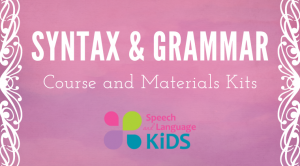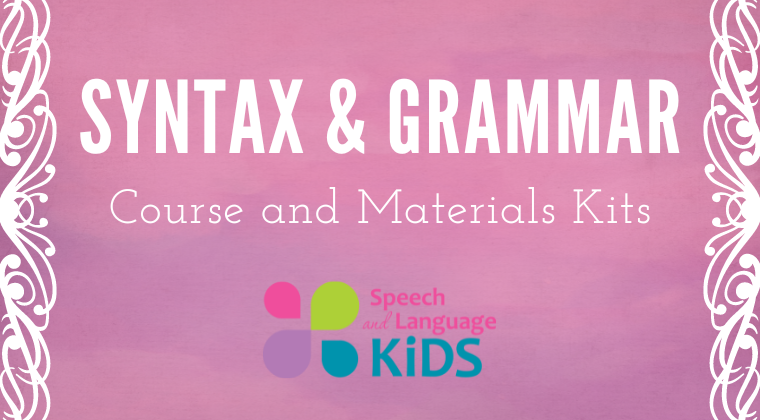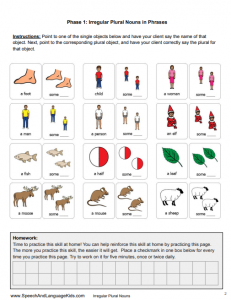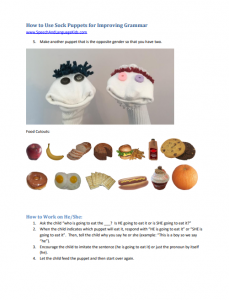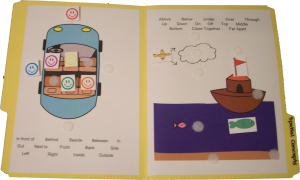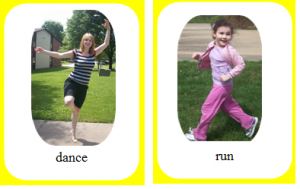Mean Length of Utterance (MLU) | Meaning, Norms, and Goals for Increasing Sentence Length
Mean Length of Utterance: What is MLU?
Mean length of utterance, or MLU, refers to the average length of the sentences that a child typically uses. For example, when children are first learning to talk, their MLU is often 1 because they only use one word at a time: “ball?”, “mommy”, “mine”, “no”. If a child uses a single word like this about half of the time but puts two words together the other half of the time (like “my ball”), then we would say the MLU is 1.5 words.
How to Calculate MLU:
Mean length of utterance (MLU) is often used to measure how well a child’s language skills are developing. If a child has a shorter MLU than we would expect, we know that child would likely benefit from speech therapy to help him/her learn more words or to put more words together. To calculate MLU, we measure how long a child’s sentences are in either words or morphemes. Often, we collect a language sample to do this. For a language sample, we will sit down and play with a child while recording everything the child says. Afterward, we will tally up the length of each utterance/sentence and collect an average.
To calculate MLU in words, we simply count how many words the child says in each utterance. That one is pretty straight forward but doesn’t always give us as much information about how complex the child’s language is. To give us more information, we can calculate the MLU in morphemes. Read on for more information about morphemes.
What is a Morpheme?
**Warning, we’re about to get all technical up in here. If you don’t care about the linguistic mumbo jumbo, I recommend you skip this section and go on to the next heading.
We typically measure MLU in morphemes. A morpheme is the smallest unit of language that holds its own meaning. That means, that if you were to dissect a word into parts, each part would have its own meaning. This is a confusing concept so let me give you some examples.
The word “apple” is one morpheme. You cannot divide that word up any more and still have any meaning to it. For example, if you divided it into “ap” and “ple”, those words don’t have any meaning by themselves. They must be together to have meaning. However, if you add an “s” to the end to get “apples”, you now have two morphemes. You can divide it into “apple” (meaning the red fruit) and “s” (meaning more than one).
Another single word that has two morphemes would be “jumping”. We can divide that word into “jump” (the action) and “ing” (meaning that it is happening currently).
The word “butterfly” may look like multiple morphemes, but it is actually just one. Yes, you could break the word into “butter” (the food you smear on toast) and “fly” (the annoying bug), but you’re no longer talking about the beautiful insect that flies around your garden in the spring. By breaking it up into those smaller words, you just changed the meaning of what you were talking about all together.
Why Calculate MLU in Morphemes?
So why does all this matter? Well that’s how we measure mean length of utterance when trying to determine if a child has a language delay. If a child says “my ball”, that’s two morphemes (my and ball). But if the child says “my balls”, then we would say she used three morphemes (my, ball, and “s”). If you were counting by number of words, both children would have the same MLU. However, the second child said a more linguistically complex sentence, so she deserves more credit on her MLU. Thus, morphemes are counted.
Whew, technical mumbo jumbo over. Let’s move on!
MLU Norms: Mean Utterance Length by Age
Mean length of utterance (MLU) is a helpful tool when we are trying to determine if a child’s language skills are delayed. So what are the development norms or milestones for MLU? Here are some ages from a 2010 study of MLU in morphemes for children at different ages. (Source: Rice et. al., 2010)
Age ~ MLU
2.5 – 3 years ~ 3.23 morphemes
3 – 3.5 years ~ 3.81 morphemes
3.5 – 4 years ~ 4.09 morphemes
4 – 4.5 years ~ 4.57 morphemes
4.5 – 5 years ~ 4.75 morphemes
5 – 5.5 years ~ 4.88 morphemes
5.5 – 6 years ~ 4.96 morphemes
6 – 6.5 years ~ 5.07 morphemes
Speech Therapy for Mean Length of Utterance
So what do you do if a child’s average sentence length (or MLU) is not where it should be? Well, there’s plenty you can do! If you are a parent of a child and you are concerned about MLU, you should of course seek out the advice of a speech-language pathologist (SLP). This advice is not meant to replace the recommendations of a licensed SLP. However, you can always try some of these strategies while you are waiting to get into therapy or while your child is already seeing someone.
In order to increase sentence length, a speech-language pathologist needs to determine what is missing from the child’s speech. Here are some areas to look at when increasing MLU:
Increasing MLU Goal 1: Increase Vocabulary:
It’s possible that the child does not have a large enough vocabulary to choose words from. If the child doesn’t have a large enough vocabulary, he may not have enough words to form longer sentences. We know from research that children don’t start combining two words together (like “my ball”) until they have at least 50 words in their vocabulary.
And even then, there must be a wide range of different types of words in their vocabulary. If the child only knows 50 nouns, he’s not going to be able to combine those in many ways that make sense. “Cookie ball” doesn’t really tell us much. Unless it was a ball made out of cookies…in which case I want one. But I digress. A child’s early vocabulary must include nouns, verbs, descriptors, possessives (like “my”), negatives (like “no”), demonstratives (like “that”), question words (like “what”), etc.
If the child you are working with has a limited vocabulary, try working on that as a means of increasing vocabulary. Here are some articles about increasing vocabulary:
Increasing MLU Goal 2: Increase Use of Grammatical Markers and Structures
Many times when we see children with short MLUs, we look to the grammatical markers. Children with language delays are often delayed at their use of these grammatical markers. This can significantly decrease those MLU readings. For example, a child who says “I want some cookies please” would get credit for 6 morphemes but a child who says “want cookie please” only gets 3. Those grammatical markers really add up! For more information on teaching grammatical markers, head on over to the grammatical marker resource page:
Click Here for our Grammar Resource Page
How to Use Expansions to Increase MLU:
If you are working with a younger child, you may have more difficulty working on specific skills like grammatical markers. One quick and easy technique you can use to increase sentence length is to use expansions while playing with a child. To use an expansion, you wait until the child says something on her own, and then you repeat it back to her while adding one word.
For example, if the child says “go outside”, you would repeat back “I go outside” or “go outside please”, or “go play outside”. It doesn’t matter what you add. In fact, you could say it multiple times and add a different word each time. Just give the child lots of models so that she hears different ways to expand on what she’s already saying.
Additional Resources for Increasing Mean Length of Utterance (MLU):
Check out our other resources for helping you learn more about boost MLU in children with language delays:

About the Author: Carrie Clark, MA CCC-SLP
Hi, I’m Carrie! I’m a speech-language pathologist from Columbia, Missouri, USA. I’ve worked with children and teenagers of all ages in schools, preschools, and even my own private practice. I love digging through the research on speech and language topics and breaking it down into step-by-step plans for my followers.
Fun Fact: I started my first business when I realized I needed something to keep me busy during Summer breaks. It was called “The Therapy Bag” and I literally printed, laminated, and cut therapy materials on the floor of my apartment and then shipped them to people. I knew nothing about business when I started and I lost a ton of money because I didn’t charge enough to cover shipping….but I learned a TON about how to run a business (or not to run it). I call it my personal MBA. I got all the experience and wisdom and paid about the same as I would have for an MBA! Haha!
Connect with Me:

